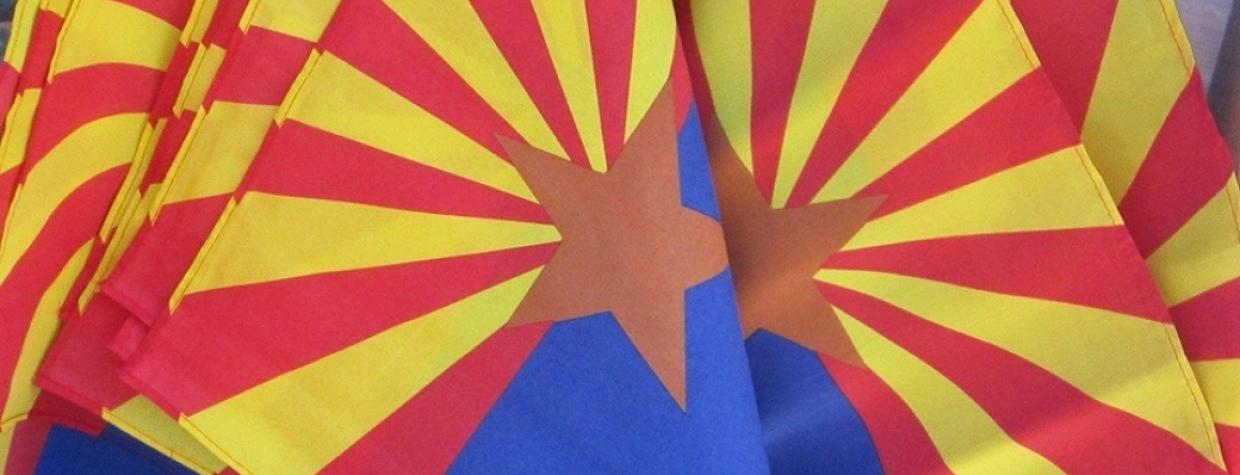If it weren't for the National Rifle Matches, a shooting competition, Arizona's state flag might never have come to fruition. For years, Arizona's National Guard was the nation's only team without a flag. But enough was enough. Colonel Charles Harris, the team's captain, didn't want to compete without representation anymore, so he drew up a temporary banner for the 1910 match, according to the Arizona State Library. May Hicks Curtis Hill, the wife of one of the guardsmen, sewed the original version.
The state flag, which was based on Harris' design, became official in February 1917, five years after statehood. However, the flag wasn't unveiled to the public until several months later, making some Arizonans restless.
In the August 18, 1917, edition of the Mohave County Miner, a Kingman citizen wrote: "Arizona has a state flag, but nobody knows it, for the simple reason that nobody ever saw it. … Arizonans should be ashamed of the fact that the state flag does not even float over the state capitol."
Finally, that September, Governor Thomas Campbell presented the flag to the public. It was made of "heavy tufted silk with gold braid borders and tassles [sic]," according to an announcement in the Bisbee Daily Review.
The flag is symbolic on multiple levels. According to the Arizona Senate, the bottom half of the flag, solid blue, is the same shade used in the United States flag. The alternating yellow and red rays on the flag's upper half reflect Spanish Colonial heritage and signify a setting sun. The copper star in the middle represents Arizona's copper industry.
- Hall of Fame
- Explore
- Photography
- Shop
- Classroom
- Subscriptions

